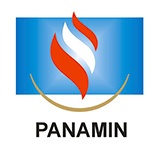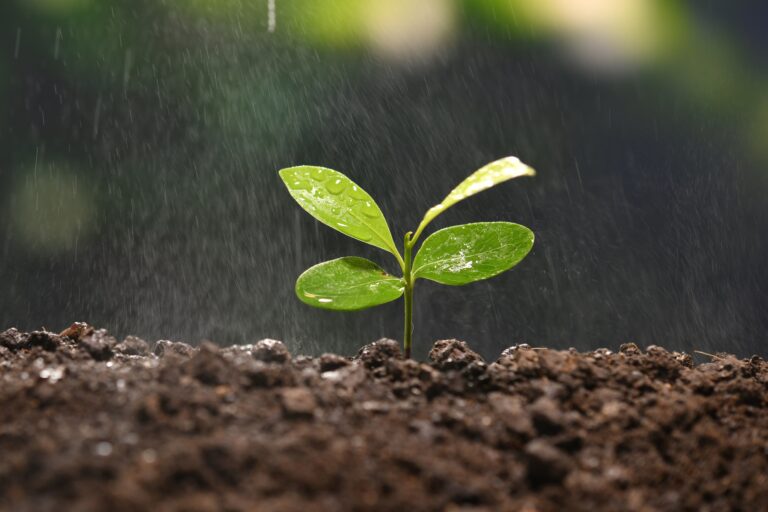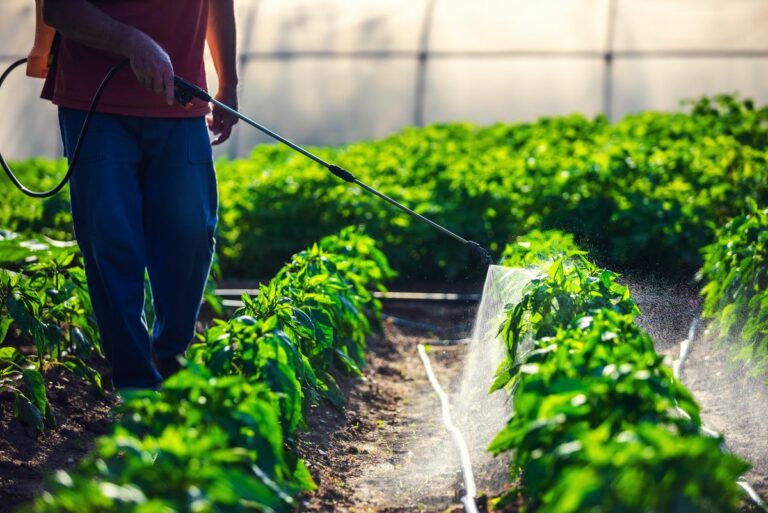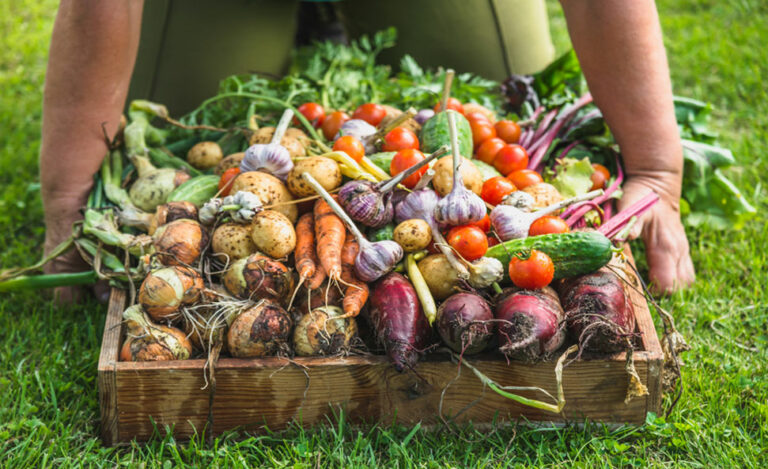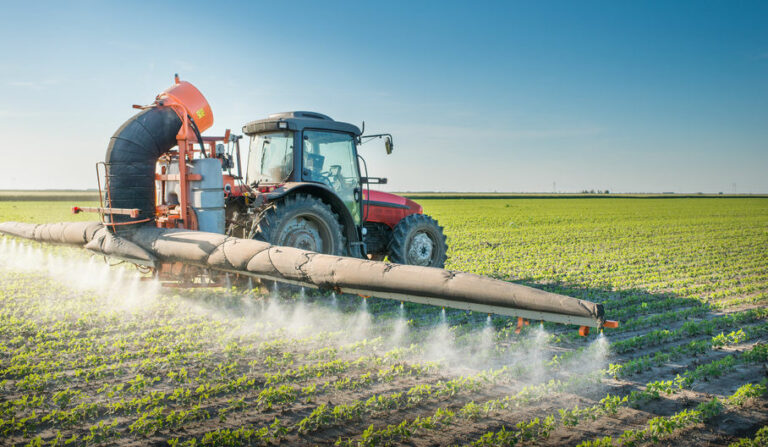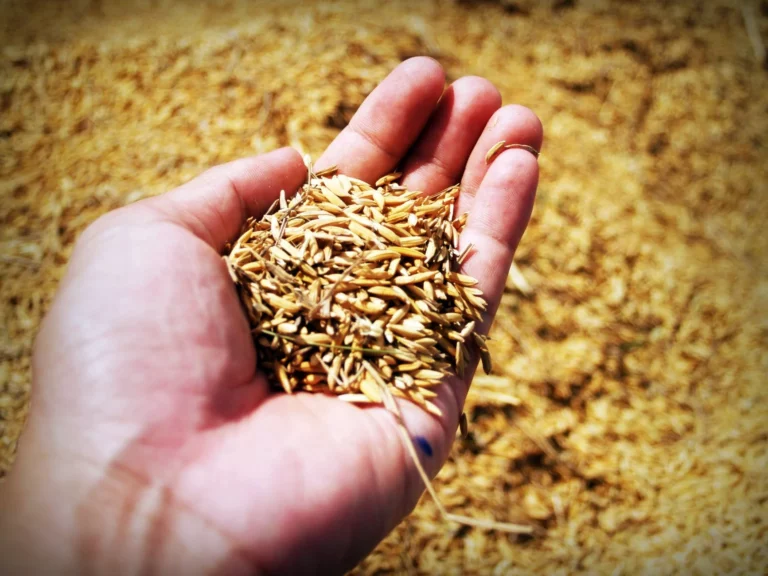It is a well-known fact that in Italy around the Etna volcano, every farmer enjoys a rich and high-quality production, because of the soils and their composition. This is due to the volcanic deposits accumulated in it during the activation of the volcano.
Blog
Panamin Fulvic Max is an innovative mixture of finely ground volcanic rocks, organic fulvic and humic extracts with no analogue in the world. The basis of each product of the Panamin series is micronized mixtures of various volcanic rocks – Calcite, Zeolite, Dolomite, and others.
When fertilizing is discussed, many people think of the most common and most used method, namely fertilization through the plant’s roots. However, the intake of nutritional elements can be obstructed in this method of fertilization. When this is the case, foliar feeding, for which the leafs are responsible, can be a solution. Like this, a stable intake of nutrients is ensured.
What is foliar fertilization?
Foliar fertilization, also called ‘foliar feeding’, is seen as another method to apply fertilizers to the plant besides the regular method (through the plant’s roots). When a (temporary) need for change in fertilization is remarked, this is often caused by a poor intake of nutrition by the crop’s roots. This can be caused by the following factors:
- Low evaporation
- Too wet/dry substrate
- Weak roots (susceptible for diseases e.g.)
- Quick plant growth
- Young and underdeveloped roots
- High pH in the root environment
- High pressure on the crop due to stress factors
Read more about how soil works
One or more of these factors could result in the necessity to change to foliage fertilizers. Foliar fertilization can happen through the stomata, trichomes, layer of wax on the leaf (cuticula), or through the intake and supply of the plant cells (endocytosis). The method that is ‘used’ eventually, is dependent on the fertilizer. One of these manners is activated by the specific fertilizer that is used.
Is foliar feeding suitable for me?
To be able to determine if foliar fertilizers are suitable in your situation, a consideration should be made, based on the pros and cons. Some help is offered by our fertilizer specialist by listing the ins and outs of foliar feeding below:
Benefits (pros)
- Quick intake of nutrients
- Low amount of energy needed for transport of nutrients, because the nutrients are in the right place immediately
- Also, non-mobile nutritional elements remain in the plant
- High utilization of nutritional elements
- No risk for fixation in the soil or substrate
Disadvantages (cons)
- Limited intake of nutritional elements
- Solely applicable in low dosages
- No after-effects, so repetition in application is necessary
- Increased risk for leaf damage or burning
Application of foliar feeding
It is important to know that foliar fertilization could also occur by nature. This is the case when the phyllo sphere (microbiology on the leaf) of a crop is arranged properly. Microorganisms are able to convert dead lice, insects and other organisms into nutrition, which after that can be taken in through the plant’s leaf easily.
Several things should be taken into account when switching to foliar feeding. This should be done under high pressure, but with a fine and delicate drip. This, so that damage to the crop can be prevented. When use of a large drip is made, the risk for leaf damage is increased. Drops are believed to have a ‘prism effect’, leading to a risk of burning the leafs. When making use of foliar feeding, take into consideration:
- Irradiance
High concentrations of sodium combined with a rapid evaporation could lead to burning of the leafs.
- Composition of the foliar nutrition
Make use of water-soluble fertilizers and trace elements. A layer of dust could remain on the leaf, when a non-suitable fertilizer such as a granular fertilizer, is chosen. Because pH is not relevant on leafs, both chelated trace elements and trace elements in the form of sulphate can be used.
- Thickness of the wax layer on the leaf
When this layer of wax is too thick, an obstruction in the effect of the fertilizer, in terms of intake, is seen.
- Age of the leaf
A variation in the intake of nutritional elements is seen for older and younger leafs.
- Humidity and temperature
Nutrition is taken in better by the plant, in an environment with high humidity and a temperature around 20°C.
- Moment of application
When the pressure in the leafs is high (turgor pressure), nutrition is taken in the best. Therefore, this pressure should always be monitored.
- Method of application
In order to remain an optimal effect, foliar feeding should never be mixed with chemical products. Besides, application under high pressure is preferred in comparison to sprinkling from above.
Dosage foliar feeding
A new dosage must be calculated once a shift towards foliage fertilizers will be made. Moreover, it should be considered that not every fertilizer is suitable for the application through the leaf. When tailor-made advice is desired, please feel free to contact our fertilizer specialists.
More efficient agriculture with foliar fertilization
Foliar fertilization dramatically increases the efficiency of your fertilization.
Soil nutrients are not always completely available. This is due to: leaching, soil fixations, blockages and other losses. With foliar fertilization we can avoid these factors. Foliar fertilization applies the nutrients directly on the leaf, where the plant mostly needs them.
With foliar applications all nutritional problems can be tackled because the leaf absorbs as well mayor elements, meso elements as micro nutrients or trace elements.
We developed nutritional programs tailored to your crop. You will need to apply the different nutrients in the right proportions at the right time. This assures an optimal result: and a higher yield of a superior quality.
The 3 most important reasons to start with foliar fertilization:
- The optimal availability for your crop
Nutrients from ordinary soil fertilizations are often totally or partially lost due to:
• secondary reactions (precipitation or adsorption onto the soil complex)
• Leaching
• bad localization of the fertilizer
Foliar fertilization is thus more efficient because the chelated nutrients are fully plant available. - Weather resistant
During cold periods when the soil does not sufficiently warm up, soil applications are useless because the plant roots are not very active. If deficiencies occur or if you want to stimulate the growth of your plants at that time, leaf applications are the best solution. Foliar fertilization promotes thus the growth of your plants even in less favorable weather conditions. - Environmentally friendly
The legislation on water pollution provoked by the leaching of fertilizers is becoming ever so more stringent. You must therefore take these strict rules into account. Foliar fertilization offers you the solution in this regard. The leaching of nitrates and other elements is strongly reduced if you completely or partially replace soil applications by foliar applications. You need to use a smaller total amount of fertilizers, which are used more effectively, to maintain productivity. Foliar fertilization is an environmentally friendly solution.
Find out more about our products
and how we can help you.
Will foliar fertilizing really make your garden grow?
Foliar fertilizers are dilute fertilizer solutions applied directly to plant leaves. As with soil application of fertilizer, the goal of foliar fertilization is to supply plants with the nutrients needed for good growth. There are many products on the market that can be used as foliar fertilizers, but are they really needed? Is there any advantage to foliar application instead of soil application? In this article we’ll review situations where foliar fertilizers may be beneficial and situations where their use is questionable at best.
When It’s Not Such a Great Idea
For all landscape and garden plants, the major pathway for nutrient uptake is by way of the roots. Leaves have a waxy cuticle, which actually restricts the entry of water, nutrients, and other substances into the plant. To a limited extent nutrients applied to leaves can be absorbed and used by the plant, but for the major nutrients (nitrogen, phosphorus, potassium) the quantity absorbed at any one time is small relative to plant needs. That means that foliar application of these three nutrients can only supply a very small fraction of the total needed by the plant, so foliar application should be considered only a supplement to regular soil application of these nutrients. If the plant already has plenty of nitrogen, phosphorus, potassium, foliar application will not have any beneficial effects. In fact, if concentrations of nutrients in the foliar spray are too high, then leaf damage can occur and in severe cases may kill the plant.
Here’s a calculation to show how hard it would be to get the required amounts of major nutrients into plants through foliar application:
For a vegetable garden, a typical recommendation for nitrogen is 0.15 pound per 100 square feet of garden area. A commonly available soluble fertilizer is 20-20-20 with a recommended rate of 1 tablespoon of fertilizer per gallon of water. It will take 0.75 pound of fertilizer to apply 0.15 pound of nitrogen to 100 square feet. One tablespoon of the fertilizer weighs about 0.35 ounce, so it will take about 34 tablespoons of fertilizer (dissolved in 34 gallons of water) to supply the right amount of nitrogen.
That amount of water will deliver about 0.6 inch of water to 100 square feet, which may not seem like much until you start thinking in terms of moisture films covering leaf surfaces. It will take only a very small fraction of 0.6 inch of water to completely cover the plant foliage, especially when plants are small (and that small stage is when plants really need the nutrients). Even if we allow for potentially greater efficiency of nutrient use with foliar vs. soil applied fertilizer, it would still be impractical if not impossible to provide all the foliar applications needed to deliver enough nitrogen in a timely manner.
A distinction needs to be made between foliar fertilization and the application of soluble nutrients in liquid form where most of the nutrients taken up by plants are absorbed by the roots from the soil. When liquid fertilizer is sprayed on foliage some nutrients are absorbed through the leaves and light, frequent applications would constitute true foliar fertilization. However, with heavier spraying there will be considerable runoff from the foliage and the liquid fertilizer will soak into the soil. In this case there would be some nutrient absorption through leaves, but the majority of the nutrients used by the plant would actually be taken up by roots. From the plant’s perspective, this is essentially the same process that occurs when dry fertilizer is added to the soil. Although it will be more expensive and time consuming than a dry fertilizer application, it is certainly feasible to meet the plant nitrogen need in the problem above by applying 0.6 inch of liquid fertilizer in a series of applications. Phosphorus and potassium, however, move very little in most soils from their point of application, so it’s better to work them into the soil before planting to make sure they’ll be within the plant’s root zone.
When It’s a Pretty Good Idea
An appropriate time to consider foliar fertilization is when a specific nutrient shortage is evident based on visual symptoms or soil analysis. If a deficiency exists, then foliar application would be one means of providing a quick but temporary fix to the problem. Certain soil conditions such as high pH, low pH, drought, excessive moisture, or cool temperatures may cause some nutrients to be unavailable for uptake by the roots. If any one of these conditions exists, the problem may be more effectively corrected with foliar applications than with soil applications.
If your azalea’s foliage is chlorotic a foliar application of iron may help.
A classic example of effectively using foliar fertilizers is for micronutrients such as iron. At high soil pH levels, iron is not available to plant roots even though high levels of iron may be present in the soil. Some plant species such as blueberries, azaleas, rhododendrons, and pin oaks are more sensitive than others to high pH. Under high pH conditions, iron chlorosis or interveinal yellowing occurs on young leaves. While lowering soil pH or selecting plants tolerant of high pH conditions are the preferred long term solutions, a way to alleviate the chlorosis temporarily is to apply inorganic salts such as iron sulfate or chelated forms of iron directly to the leaves. Chelates are chemical compounds that help iron stay in solution over a wide pH range. A general recommendation for iron sulfate is 0.8 ounces per gallon of water. For chelated forms, follow the directions for rates to apply on the label of the specific product selected. Make sure that the spray fully covers the leaves. Applications of iron are most effective shortly after leaf emergence and only on those leaves that have been sprayed. Iron will not move to leaves emerging after a spray, so new leaves will be chlorotic. Usually two or three applications are needed to ensure that all newly emerging leaves are covered. Foliar iron sprays will need to be reapplied yearly, unless steps are taken to change the underlying soil pH problem.
The cuticle on leaves of most plants will cause water to bead up and prevent good penetration. So, for all foliar applied products, it is important to include a wetting agent or surfactant to allow for full coverage of the leaf. One or two drops of detergent per gallon of water will help to wet the leaf surface. If rain occurs shortly after an application, most of the spray will be washed off the leaves and reapplication will be necessary.
Important points about foliar fertilization:
- Routine use of foliar fertilizers without a documented need is not recommended.
- Foliar fertilization is unable to meet the total plant requirements for the major nutrients nitrogen, phosphorus, and potassium.
- Foliar fertilizers are most effective when soil problems occur that restrict nutrient availability such as iron availability in high pH soils.
- Foliar fertilization should not be used as a substitute for good soil fertility management. Have your soil tested and fertilize according to soil test recommendations.
Introduction to regenerative farming
The term regenerative farming refers to a wide range of practices that optimize the soil, water and air quality of farms, ranches and other land stewardships. Regenerative agriculture can be practiced in any climate or region of the world. It relies on natural processes to build soil health, increase biodiversity and improve resilience to climate extremes.
Types of pesticides
Pesticides are chemicals that are used to kill pests. There are three main types of pesticides: insecticides, herbicides, and fungicides. Insecticides are used to kill insects, while herbicides are used to kill plants. Fungicides are used to kill fungi. Pesticides can be either natural or synthetic. Natural pesticides include things like garlic and pyrethrum, while synthetic pesticides include things like DDT and Roundup.
Biological control of pests
Biological control of pests can be an effective way to manage pests because it is specific to the target pest, and it does not harm non-target species. In addition, biological control agents are often more sustainable than chemical pesticides, and they can continue to control pests for long periods of time.
